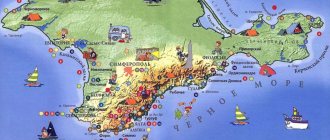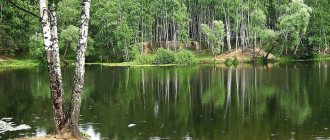ShkolaL wishes good day to the little schoolchildren and their parents!
Today our attention was paid to the project My Small Motherland. You need to pay special attention to it, since it is the very first school project in the life of a first-grader. It appears in the curriculum already in the third week of 1st grade.
The good news is that the topic is interesting and the task is quite simple. Let's see this by looking at the textbook on the world around us.
Implementation plan for the project “My Small Motherland”
- Select photos for the project
- Come up with bright captions for photos
It is enough to paste 2-4 photographs in a workbook; there is simply no room for more. You can use up to 10 photos when making a presentation.
Requirements for photographs.
The photographs should show not just views of your hometown or village, but memorable and dear places to you personally. It’s good if the author himself, the student, is present in the photographs.
Requirements for captions for photographs.
Captions should be laconic, but emotional, otherwise they will not express the author’s personal attitude.
An example of a photograph and caption:
Caption: The most beautiful place in the world!
You should also be prepared to tell from photographs about your favorite places in your hometown or village.
Project work plan
Of course, we will also complete the task from the textbook. That is, we will take photographs of Lipetsk with captions.
We also decided to supplement our work with data about the age of our city, its main features that distinguish it from other cities in Russia and which we can be proud of. Let’s also try to find our city on the map of our vast Motherland. It will be a real local history adventure.
Here is our work plan point by point:
- Find out how old Lipetsk is and when City Day is celebrated.
- Discuss what Lipetsk residents can be proud of.
- Find Lipetsk on the map of Russia.
- Find photos on the Internet with views of Lipetsk and choose the two most interesting.
- Come up with captions for the selected photos.
- Design your work as a tablet.
What is a tablet? It's like a laptop, but without the side flaps. A little further you will see everything for yourself.
You can begin collecting the necessary information.
Example of a speech at a presentation:
Hello! My name is Elena Nikitina and I am in first grade.
I live in the city of Moscow and this city is my small homeland.
My Moscow is a very beautiful city that I love very much. Moscow is an old city, but there are many new buildings in it. This contrast between the past and the future makes my city unique and unique, giving it its extraordinary beauty.
I love ancient buildings and modern new buildings in Moscow, I love its wide avenues and huge squares. I really love the Kremlin and Red Square, I love walking along Arbat and visiting museums. I love Moscow parks, especially Gorky Park. I also really love the numerous fountains that decorate my city.
My small Motherland is not just one, albeit a very large and beautiful city. For me, my small Motherland is, first of all, my yard, my kindergarten, and now also my school. These are my parents, my friends, my beloved cat. My little Motherland is everything that has surrounded me since birth, what I have become accustomed to and what I can never do without.
Conclusion:
This project helped me better understand what a small Motherland is and how much it means to every person.
Thank you for your attention!
Collecting information
So, our small homeland is the city of Lipetsk.
We found out that it was founded in 1703, which means that this year it turned 318 years old. Well, we already know about City Day. We attended the celebration in person in the month of July.
Then we brainstormed together to figure out what we, as Lipetsk residents, can be proud of.
The following options have been selected:
Lipetsk is called the pearl of the Black Earth Region.
Lipetsk is a very green city.
Lipetsk has a very beautiful and large railway station.
The city has the so-called Lipetsk Sea.
One of the largest metallurgical plants in Russia is located in our city.
Lipetsk is called the city of fountains.
There are many beautiful parks in Lipetsk.
There are so many reasons to be proud! Then from this variety we will choose the very best.
It's time to start mapping Russia. We conducted a geographical study of the map and Lipetsk was found)
The Internet is full of photographs with views of our city. We chose two.
This photo shows our city Komsomolsky pond with fountains.
And this is the most beautiful Lenin-Cathedral Square, which we often visit.
We thought that a couple of photos would be enough. In the second grade we’ll have a blast, there’s a project called “Hometown”, essentially the same topic. Then we will make a whole photo album.
In the meantime, let's start making our tablet.
An example of a finished presentation for the project “My Small Motherland - Moscow”
The world. Pleshakov. Workbook. 1 class. Answers
Hello! My name is Maria, I am the author of the Pushkin website. I hope that my site helps you, in turn I ask for your help. My son was diagnosed with autism. He needs daily correctional activities, if you can help, I will be grateful to you. Every 10 rubles you give is another chance for my child to live a full life. Collection page here
The story of my Small Motherland Author: Olga Karelina, 10th grade student. - presentation
The history of my Small Motherland Author: Olga Karelina, 10th grade student
Every person has a homeland - the land where he was born and where everything seems special, beautiful and dear. Everything in it is painfully familiar, there is no time to stop, look back... But there are moments when one’s home becomes dearer than anything in the world, and we associate the concept of human happiness with one’s father’s house, street, village, city... Every person has a Motherland - a land, where he was born and where everything seems special, beautiful and familiar. Everything in it is painfully familiar, there is no time to stop, look back... But there are moments when our home becomes dearer than anything in the world, and we associate the concept of human happiness with our father’s house, street, village, city...
Why should we know the history of our region?
Hypothesis: If you know the history of your Small Motherland, you can be proud of it
Purpose of the study: studying the history of the village. Drakes Research objectives: To get acquainted with archival materials on the history of the village; Communicate with residents of your native village; Learn to work with various information sources; To study the attitude of teenagers towards their Small Motherland; Create a research presentation.
Progress of the research It was suggested that you can be proud of your Motherland only by knowing its history; We studied archival materials; We analyzed stories - stories of local residents and prominent people of the village; We conducted a survey of teenagers about their knowledge of the history of their Small Motherland; The results of the entire study were presented in the form of a presentation
RESEARCH RESULTS HOW WAS THE HISTORY OF MY REGION? The village of Selezni is the former Soldatskaya Settlement of the Red Town. Founded by servicemen during the construction of the earthen Tatar rampart to repel the threat of attack by Tatar robbers. Then, the fortified Red Town forever lost its military significance, and people, freed from military service, took up agricultural work. - official name - the village of Soldatskaya Sloboda (Selezni) - local name - the village of Soldatskaya Sloboda (Selezni) - former owner of the peasants - state - form of land ownership - communal. — From which it follows that the village had two names until the end of the 19th century: the old one was Soldatskaya Sloboda, the new one was Selezny. According to residents, the village got its name from the fact that there were a lot of ducks here, since the village of Selezny is located in the valley of the Chelnovaya River.
Selezni village, Tambov district
FROM THE MEMORIES OF RESIDENTS During the years in our village, people cooked food in the summer using kerosene gases. Almost every house used kerosene gases, and therefore required kerosene. If you go down from the church to Central Street, there was a kerosene shop on the left side of the street. It looked like a barn. It contained tanks that were periodically filled with kerosene. When kerosene was delivered, people with special metal cans with screw-on lids (like gas masks) lined up at the kerosene shop. And the seller importantly filled the containers, lined up in rows, with a liter scoop - a measuring stick. Some with one, some with several cans, the happy people went home. On the right side of the kerosene shop there was a store. There were two entrances, separately into food and industrial goods. When the students were returning from school, which was located not far from the church, they went into the store to buy candy. Another attraction of the village was the club. There, on Central Street, not far from the store. It was a brick house with bricked up windows. Inside there were rows of wooden benches and a stage. Near the door under the ceiling there was a window through which our local celebrity, Uncle Kolya “KOLOBOK”, showed films to the local population. Regular films cost 5 kopecks, and two-part films cost 20 kopecks. Indian films “Zita and Gita”, “Ram and Sham”, “Revenge and the Law”, “Bobby” were popular. The club was packed to capacity. When the last spectator left the club, the floor was covered with a continuous carpet of sunflower seeds.
ATTRACTIONS OF MY LITTLE HOMELAND THE EPHENY CHURCH OF S. SLEZNI The village has existed since the 17th century, as the Soldatskaya Settlement of Bald Mountains (Tambov Encyclopedia. Tambov, p. 519). The stone church was built in 1840, at the expense of the merchants Gnusov and Subochev, but the parish has existed since 1804. Later, at the expense of the parishioners, the temple was expanded so that in relation to the new it is a refectory. On November 6, 1911, it was consecrated: the main altar was consecrated in honor of the Epiphany of the Lord, the chapel in honor of St. Trinity and St. Nicholas. The church was heated. The parish also included the villages of Malinovka 1st, Malinovka 2nd (Galitsyno), Kozlovka (Protasovo), Kaverinka (Chivilevka), as well as the economies of Poluboyarinov and Novikov (ISO P. 116). The church was not officially closed; in 1943 it housed a granary. In the 50s there was a fire in the temple (GATO. F. R. D. 28. l. 15). In 1988, the Epiphany Church was handed over to believers. The roof was partially replaced, the northern porch was repaired, glass was inserted into the frames (the drum of the dome), finishing work was carried out in the church house intended to house the rector and a Sunday school, four banners were welded to the vaults of the church, and the southern porch was restored. Parish life is actively developing, there is a Sunday school, pilgrimage trips are made, and the city of Tambov has its own icon shop. Their parish traditions have also been preserved. The feast of the Dormition of the Mother of God is especially revered. The day before, an all-night vigil is served with the reading of the akathist, in the morning there is a mass and an ecumenical memorial service. Then everyone goes to the cemetery, the priest and the choir go around all the graves and serve a funeral litany. Up to 3,000 people attended this holiday in 1995. Parents' Saturdays are especially honored. During Holy Easter, a great crowd of people gathers, especially young people, not only from villages, but also from the city. The military unit takes an active part in the celebration.
DEVELOPMENT OF EDUCATION IN VILLAGES. After the abolition of serfdom in Russia, numerous reforms were carried out, one of which was the reform of local self-government. Since 1864, zemstvo self-government was established to manage economic affairs: the construction and maintenance of local roads, schools, hospitals, almshouses, etc. The administrative bodies of the zemstvo were provincial zemstvo councils. These transformations did not bypass the Tambov province; in it, as throughout the country, district and provincial zemstvos were established. In 1869, in the village of Selezni, Lysogorsk volost, Tambov district, the zemstvo opened an elementary school and maintained it using joint funds with the peasant society. Initially, the school was located in a church guardhouse, and only boys aged 8 to 15 years studied there. Since 1882, Olga Leontyeva taught children. On March 7, 1898, the zemstvo completed a new building for the school. In parallel with the zemstvo school, the theological diocese opened a literacy school, which was later transformed into a parish school. The school year in the zemstvo school, as in our time, began in September and ended in May, but there were only 146 school days a year, mostly children studied from October to March, that is, during the period free from field work. On January 7, 1900, after graduating from the diocesan school, Alexandra Fedorovna Pavperova came to the village as a 16-year-old girl and worked at the school until 1953. The Soviet government highly appreciated the merits of Alexandra Feodorovna, awarding her the Order of Lenin.
In the pre-war period, Vladimir Pavlovich Strezekozin worked as a primary school teacher in Seleznevskaya and Lysogorsk schools: during the Great Patriotic War, colonel, chief of staff of the division; after the war - deputy head of the Tambov OBLONO, then transferred to Moscow. In 1959, Seleznevskaya elementary school was reorganized into an eight-year school. In terms of the number of students, this is one of the largest eight-year schools in the Tambov region. It was located in 3 buildings, of which two were brick, one was wooden. The third brick building with 14 classrooms was built in 1960. During this period there were 932 students, 36 teachers. There are classrooms: physics, chemistry and a carpentry workshop. Since 1948, a training and experimental site has been established at the school. There is a garden on the site, grown by the students. In the post-war period, there were two schools in the village: daytime and evening (Seleznevskaya Secondary School for Rural Youth). The classes in the day school were filled with people, the parallels reached up to 4 classes. In 1974 the school became a secondary school. The director at this time was Vasily Egorovich Petrovichev. The number of students is increasing and, in connection with this, a project for the construction of a new building is being developed. Since 1977, Nikolai Sergeevich Petrov, who had previously worked as the director of an evening school, was appointed director. Construction of the new school building was completed by September 1 of the school year. The opening was attended by many guests, including the head of the Tambov RONO Vladimir Ivanovich Borovtsov. The school was built according to the most modern requirements at that time, designed for 700 students. And today the school is one of the best schools in the area.
30 teenagers were interviewed about why they need to know the history of their Small Motherland; based on the survey results, a diagram was drawn up
Conclusions The hypothesis was confirmed, since we found out that you need to know the history of your Small Motherland. A teenager who knows the history of his village, city, region, cultural monuments, architecture will never commit an act of vandalism. He will simply know their value and be proud of his Motherland.
Informational resources



